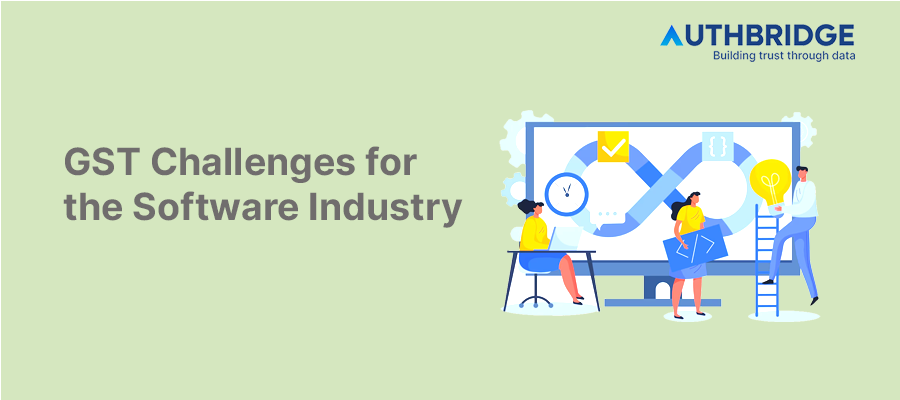Navigating GST Challenges In The Software Industry: A Strategic Guide

The introduction of the Goods and Services Tax (GST) in India marked a significant shift in the tax landscape, aiming to unify the country's complex tax structure into a single, streamlined process. While GST has been hailed as a game-changer for various sectors, the IT and software industry faces its own set of challenges and opportunities under this new regime.
Introduction to GST and Its Impact on the IT Sector
Overview of GST Implementation
Implemented on July 1, 2017, GST replaced a plethora of indirect taxes with a single tax, promising to make doing business easier and more transparent. For the IT sector, which is a significant contributor to India's GDP and export earnings, GST has meant recalibrating pricing, tax compliance, and business strategies.
The Shift from Multiple Taxes to a Unified GST
The pre-GST era was riddled with multiple taxes like VAT, service tax, and excise duty, leading to a cascading effect that inflated costs. GST sought to eliminate this by introducing a uniform tax rate, thereby simplifying the tax structure for the IT sector.
GST Rate Changes and Their Implications
Transition from VAT and Service Tax to GST
Under the previous regime, the sale of software attracted both VAT (at rates varying between states) and service tax (15%), leading to double taxation. GST has consolidated these into a single rate, but at 18%, which has implications for software pricing and service costs.
Impact on Software Products and Services
The unified 18% rate, while simplifying tax calculations, has also led to an increase in the cost of software services. This has necessitated a reevaluation of pricing strategies within the IT sector to maintain competitiveness both domestically and globally.
Challenges Faced by the IT and Software Industry Under GST
Increased Tax Rate for IT Services
The increase from a 15% service tax to an 18% GST rate has made IT services more expensive. This has a direct impact on the pricing strategies of IT companies and their competitiveness in international markets.
Classification and Place of Supply Issues
Determining the place of supply for IT services can be complex, especially for cloud-based services and software as a service (SaaS) models. This complexity can lead to uncertainties in tax liabilities and compliance requirements.
Compliance and Administrative Burdens
The IT sector now faces increased compliance obligations, including multiple return filings and the need to maintain detailed transaction records. This has significantly increased the administrative burden and operational costs for IT companies.
Impact on Software Pricing and Competitiveness
The increased tax rate and compliance costs under GST have led to a rise in the prices of software products and services. This could potentially affect the global competitiveness of India's IT sector.
Input Tax Credit (ITC) Under GST: A Silver Lining
Eligibility and Benefits for the IT Sector
One of the major advantages of GST for the IT sector is the availability of input tax credit across the supply chain. This allows businesses to offset their GST liabilities against the tax paid on inputs, potentially lowering the overall tax burden.
Challenges in Availing ITC
Despite the benefits, availing ITC under GST has its challenges, including stringent compliance requirements and the need for meticulous record-keeping. Ensuring eligibility for ITC requires IT companies to align their procurement and accounting practices with GST norms.
The Burden of Compliance Under GST
Filing Returns and Payment Processes
GST mandates regular filing of returns and payments, which can be daunting for IT companies, especially SMEs with limited resources. Adapting to these requirements has necessitated investments in GST-compliant software and systems.
Software and ERP Upgrades
To comply with GST, IT companies have had to upgrade their ERP and accounting software, incurring significant costs. These upgrades are essential for managing the complexities of GST calculations, filing returns, and availing ITC.
GST's Impact on Export of IT Services
Zero-Rated Supplies and Refund Mechanism
Exports under GST are treated as zero-rated supplies, allowing exporters to claim refunds on the input tax paid. This is a significant benefit for IT service exporters, enhancing their competitiveness in the global market.
Challenges in Export Documentation and Compliance
Despite the benefits, the export of IT services under GST requires stringent documentation and compliance, posing challenges, especially for smaller players unfamiliar with the intricacies of international trade regulations.
Conclusion
The implementation of GST has been a mixed bag for the IT and software industry. While it has simplified the tax regime and offered benefits like input tax credit, it has also introduced new challenges in terms of increased tax rates, compliance burdens, and the need for system upgrades. Balancing these challenges with the opportunities provided by GST will be key to ensuring the continued growth and global competitiveness of India's IT sector.
As the industry navigates through the GST maze, staying informed, leveraging technology for compliance, and strategic planning will be crucial for harnessing the full potential of this tax reform. The journey is complex, but with the right approach, the IT and software industry can turn GST challenges into opportunities for innovation and growth.
Category

Abhinandan Banerjee
(Associate Manager - Marketing)
Abhinandan is a dynamic Product and Content Marketer, boasting over seven years of experience in crafting impactful marketing strategies across diverse environments. Known for his strategic insights, he propels digital growth and boosts brand visibility by transforming complex ideas into compelling content that inspires action.



